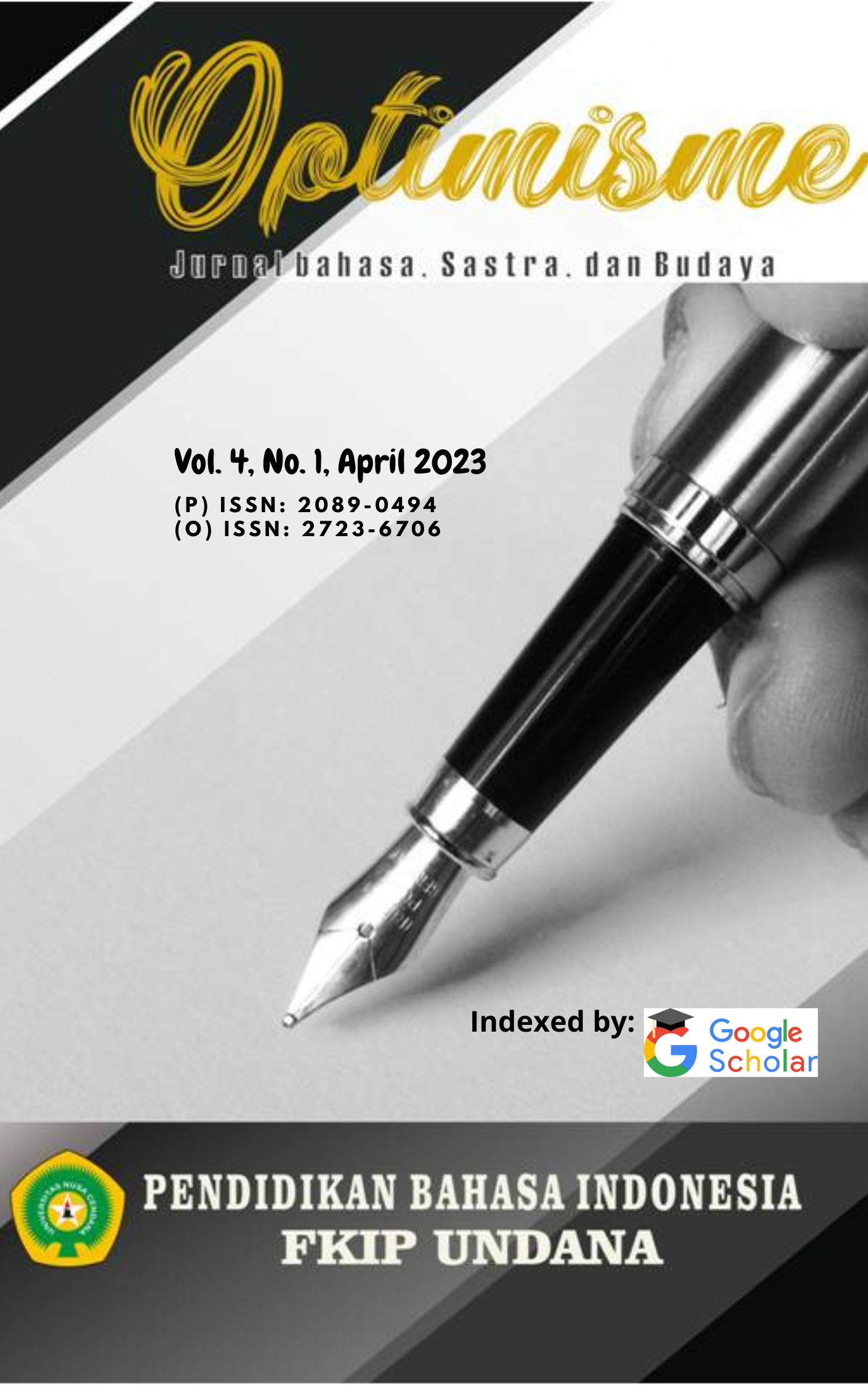STRATEGI RESPONS TUTUR DIREKTIF SISWA TERHADAP TUTURAN GURU
Abstract
This study finds out the student directive utterance towards teacher utterance during interaction of learning process. The aim of this study is to describe student’s directive speech strategy towards teacher speech in learning interaction. This study was conducted because student speech brings important role in teaching and learning activities named observing students’ speech, then the teacher can see and assess the concepts and methods used by students in teaching and learning activities. These findings are useful as analytical model to implement speech theories to student speech. This study uses qualitative approach with pragmatic type. The data of this study based on the directive speech of students to the speech teacher that observe from communication strategy directive student speech. This data based on the interaction between teachers and students in learning interactions. Data collection of this study was done by recording techniques and notes. The instrument of this study is transcript guidelines, data codification guidelines, and data analysis guidelines. The data of this study were analyzed by speech act theory. The results of this study show that students' directive speech action strategies towards teacher speech which include direct and indirect communication strategies that represent students' speaking functions. The direct strategy of student directive speech acts is found in response to teacher's speech, such as questioning, ordering, asking, reminding, allowing, and directing. Indirect strategies of student directive speech acts are found in responding to teacher's speech, namely reminding, asking, instructing, instructing, and questioning. Based on these findings it was concluded that the intention in directive speech of students to teachers has three things The strategy of delivering student directive speech responses to teacher speech is that speech can be divided into direct and indirect speeches. It means that there are two ways of expressing speech intentions based on the expressions revealed named direct and indirect ways.
 Laurensia Elya Puspita(1*)
Laurensia Elya Puspita(1*)



